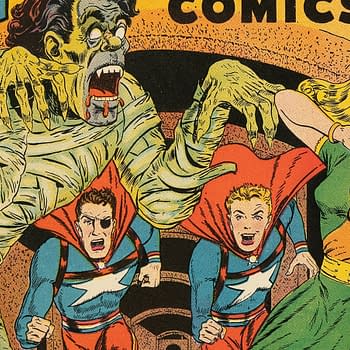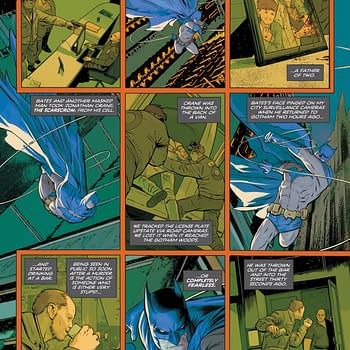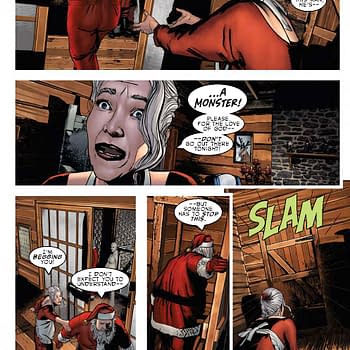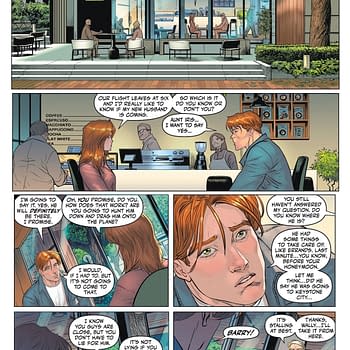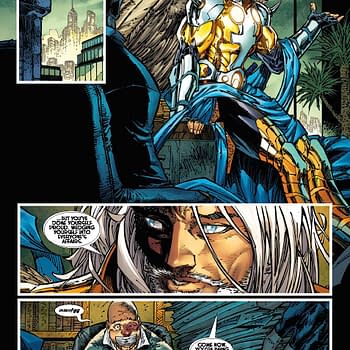Posted in: Comics, Comics Publishers, DC Comics, Recent Updates, Vintage Paper | Tagged: atom, Julius Schwartz, Mort Weisinger, pulps, raymond palmer, roswell, ufo, vintage comics
Roswell, The Beginnings Of The UFO Craze And What It Has To Do With DC Comics
July 8, 2017 is the 70th Anniversary of the infamous event that helped ignite the UFO craze — A United States Air Force balloon crash near Roswell, New Mexico which became a center of "flying disc" reports, conspiracy theories, and even FBI Investigations. The events surrounding Roswell itself are relatively well known, but what's far less known is the key role played in these theories by a pulp and magazine editor who was close friends with two important DC Comics editors. So close, in fact, that a well-known DC Comics character is named after him.
Raymond Palmer was the secret identity of the Silver Age version of diminutive DC Comics hero The Atom, created by Gardner Fox, Gil Kane, and Julius Schwartz. The real-life Raymond Palmer was also a longtime friend of DC Comics editors and writers such as Schwartz, Mort Weisinger, and Otto Binder. Palmer had been hit by a truck as a child, and suffered a spinal injury which inhibited his growth. He became an avid science fiction reader, and he, Schwartz, and Weisinger were all part of the foundational science fiction fandom of the 1930s. They worked on fanzines together in their younger days, and each of them became professionals in comic, pulp and science fiction endeavors.
Palmer eventually became the editor of staple science fiction pulp Amazing Stories, where he had a penchant for scientific hoaxes, blending fact and fiction, and promoting the notion that some stories he ran in the pulp might have a firm basis in reality. One well-known instance of this was his promotion of what is known as "The Shaver Mystery" series which dominated Amazing Stories in the late 1940s, and which built up a mythology around an ancient and advanced civilization which had developed deep below the surface of the Earth.
This was not Raymond Palmer's first exposure to the power of scientific hoaxes in the media. Palmer, Julius Schwartz, and Mort Weisinger all played key roles in the rise of science fiction fandom in the 1930s, and in one instance worked together on a fanzine title called Fantasy Magazine. Julius Schwartz wrote a series of columns for the magazine covering various scientific hoaxes throughout history. In one nifty bit of foreshadowing, the January, 1934 entry covered the Great Moon Hoax of 1835, which was about a race of Batmen on the moon, reported as a factual scientific discovery in the New York newspaper The Sun in several issues that year. In another nifty bit of foreshadowing, one of Raymond Palmer's regular columns in Fantasy Magazine was titled Spilling the Atoms.
A few decades later, Schwartz would be the editor of Batman (among many other titles), and he would also name the Silver Age version of The Atom after his friend Ray Palmer. Palmer himself would be promoting scientific hoaxes like UFO conspiracies and other topics which took the separate terms 'science' and 'fiction', and smashed them together with as much force as possible.
What we know of Palmer's role in the development of UFO conspiracies comes largely from the files of the FBI. Roswell was actually preceded by two weeks by two other events, on June 22 and June 24, 1947. During the Maury Island Incident, two men claimed to have seen UFOs — among other things– in the sky over Maury Island, Washington. Two days later, aviator Kenneth Arnold claimed to have seen nine UFO's flying in formation near Mount Rainier, Washington. The FBI later found that Raymond Palmer was in contact with all of these men soon after:
Within two days of the Arnold sighting, Palmer sensed a marketing opportunity. He wrote to Arnold asking him to contribute his story to Amazing Stories, where presumably it would run alongside Shaver's Lemurian mystery as "proof" of the "space ships" of Lemurians returning from other planets. Arnold provided Palmer with an account of his sighting, and would eventually work with Palmer on a book version. Palmer, who believed in Theosophical concepts like the Akashic record and the flying ships of interplanetary Masters, had already planned to turn the unidentified "discs" into spacecraft from another world within days of Arnold's sighting.
The men soon confessed to the FBI that the story was false and that they told the tale because Palmer had promised a cash payment to them for more flying disc parts. Indeed, Dahl told FBI agent Jack Wilcox that he had sent Palmer unidentified metal in early June but that Palmer had called him right after the Arnold sighting, concocting the flying disc story and manipulating him into agreeing that the debris was from a flying disc. However, one subsequent document said that the two men instead claimed that they would pretend the story was a hoax to avoid publicity. Richard Dolan makes much hay of this but the documents aren't really in disagreement. The men told Wilcox that they had tried to tell Palmer that the story was a joke, and they told later investigators that the story of the flying discs had been made up by Palmer. They reversed themselves many times after that. Crisman and Dahl went on to allege to Gray Barker that the Men in Black tried to silence them, though Dahl would concede many years later that this too was a hoax.
Maury Island, Mount Rainier, and Roswell in quick succession (among other reports and incidents) primed the public's interest in UFOs, and the fast-thinking Palmer had positioned himself to take full advantage of this interest. He first reported on these events in the October, 1947 issue of Astounding Stories, and by early the next year had co-founded a magazine called Fate to report on what we'd consider from the present perspective as X-Files territory.
This is a tiny sliver of the incredibly fascinating story of Raymond Palmer and his role in the events leading up to Roswell. One could write a book or two about the rest of it, and in fact there have been a few. Fred Nadis' The Man from Mars is a particularly good one, though I think there will be much more detail to emerge from Palmer's fanzine days alongside Schwartz, Weisinger, and others some day.












